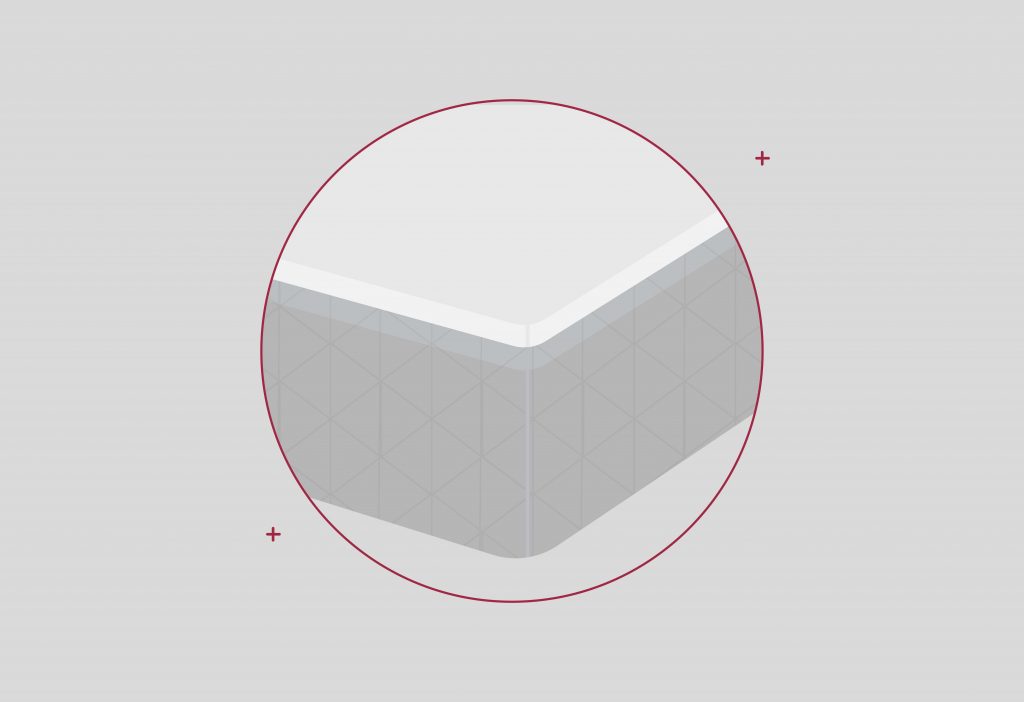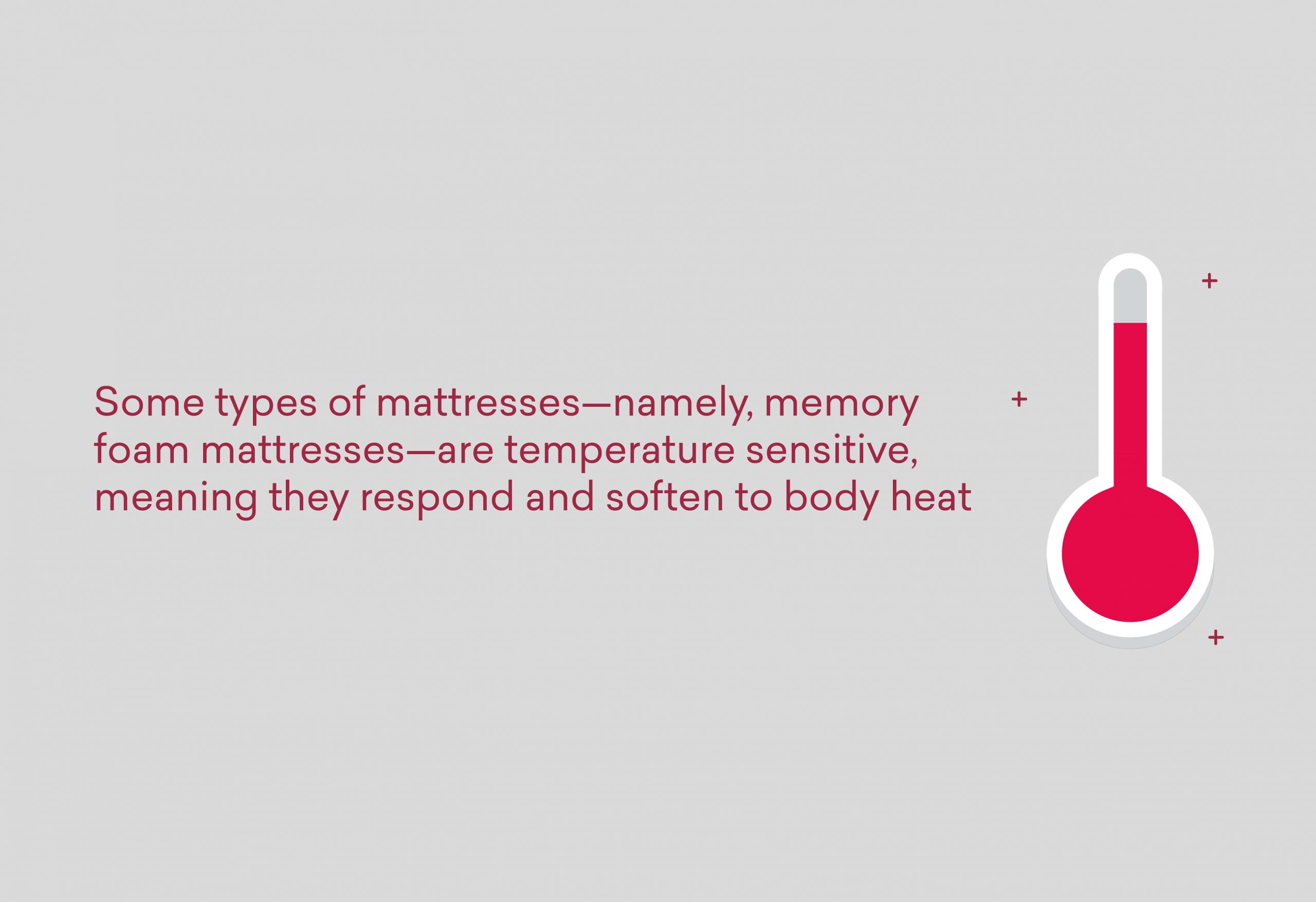Mattress Too Firm? Learn How to Soften Your Mattress

Sleeping on too firm of a mattress is not only uncomfortable but harms both your sleep and health. However, mattresses are expensive. Realistically, not all of us can afford to replace our mattresses just because they’re a bit too firm.
Buying a mattress often requires budgeting and saving for many months. Also, if your mattress is new, but turned out to be too firm, it’s not always worth it to buy a second mattress. The bottom line: if your mattress is too firm and uncomfortable for you, you don’t have to suffer.
Softening an overly firm mattress isn’t impossible and won’t cost you a boatload of money. We run through some simple solutions to soften your mattress and get you sleeping comfortably.
Use a Mattress Topper
Getting a soft mattress topper is one of the simplest and most reliable ways to alter your mattress’s firmness. Mattress toppers are 1 to 3-inch pads covering the entire surface of your mattress. They function as an additional comfort layer for your bed. Toppers usually cost between $100 to $300, though that’s inexpensive compared to buying an entirely new mattress.
Choose a topper thickness based on how firm your mattress is. If your mattress is much firmer than you need, use a thicker, 3-inch mattress topper to drastically soften your mattress. If your mattress is slightly too firm, use a 1 or 2-inch mattress topper for a mild change.
Some common materials for mattress pads include memory foam, latex, down, and down alternative.
Memory Foam
Memory foam is a popular material because it excels at relieving pressure points and altering the feel of your mattress. Memory foam toppers contour closely to your curves, distribute your body weight evenly, and ease any pain you may be experiencing.
Latex
Latex is a naturally hypoallergenic foam produced from the sap of rubber trees. Latex toppers are supportive, breathable, and pressure-relieving. While latex mattresses can get a bit expensive, latex toppers are reasonably priced.
Down
Down is a soft fiber made from the feathers of goose and ducks. It has a luxurious feel and is good for softening up your firm bed. However, it won’t be as supportive or pressure-relieving as latex or memory foam.
Down Alternative
Down alternative is soft and fluffy—similar to regular down—but is much cheaper and easier to care for. Down alternative toppers work well, but they tend to get hot and wear down sooner than other toppers such as latex, memory foam, and down.
Cotton
Cotton toppers are breathable and durable, but they aren’t always the most supportive. Still, a cotton topper is a good option if you’re only looking to soften your bed, not pressure relief or extra support.

Reevaluate Your Foundation
If you’re using an incompatible mattress foundation for your mattress, your bed might feel uncomfortably firm. For instance, if you have a memory foam or latex mattress but use a box spring beneath it, the mattress will feel too firm. Using an incompatible base with your mattress also voids most mattress warranties.
Memory foam mattresses and hybrid beds are compatible with a platform bed, mattress foundation with slats, or adjustable bed frame. Conversely, innerspring mattresses are compatible with box springs.
With this in mind, always check with the manufacturer to determine the right mattress base.
Break Your Mattress In
Sometimes your mattress might just feel too firm because it’s new. Just like with clothing or shoes, your mattress needs some time to break in and get comfortable.
Your mattress may feel a bit stiff the first few times you sleep on it, especially if it’s a bit firmer than your old mattress. We suggest sleeping on your bed for at least 30 to 60 nights before deciding if it’s too firm.
Adjust the Thermostat
Some types of mattresses—namely, memory foam mattresses—are temperature sensitive, meaning they respond and soften to body heat. So, if your bedroom is cold, your mattress will react and get stiff.
We suggest raising your room temperature to 65 to 67 degrees Fahrenheit, using a heated blanket, or using flannel bedsheets to warm up your mattress. With this in mind, be wary of making your bedroom too hot. Being hot at night can make it difficult to get comfortable fall asleep.
Double-Check Your Trial Period
Nearly all mattresses come with sleep trials where you can test your mattress out at home for some time and easily return the bed if you don’t enjoy it. So, if your mattress is new, check when you first received your mattress to see if you’re eligible to return it.
If so, mattress companies either come and dispose of your mattress for you or give tools for you to dispose of your mattress yourself.
Signs Your Mattress is Too Firm
Your mattress may be too firm most likely due to your sleeping position and body type. Even if a firmer bed is best for you, there is such a thing as too firm of a bed. Using a too firm bed can cause muscle and joint pain and deteriorate your sleep quality.
You Wake Up With Pain or Numbness
If your mattress is the wrong firmness for your sleeping position or size, it can lead to pressure build-up and pain. The intense pressure on your body can cause you to wake up feeling numb, such as having a dead arm or tingly foot.
For example, if you sleep on your side and your mattress is firm, you may develop pain around your shoulders and hips as both body parts need lots of cushioning. Similarly, if you’re a petite sleeper using a firm mattress, your body won’t put enough pressure on the mattress to be properly cradled, leading to sore muscles.
You Struggle to Get Comfortable or Fall Asleep at Night
If you’re constantly tossing and turning in bed at night, it may be because your mattress is too firm for you. A too-firm mattress causes pressure build-up and numbness, making it difficult for your body to relax and sleep.
You Wake Up Feeling Tired
As a result of a too firm mattress, your sleep quality may suffer. Even if you do manage to fall asleep, your body may not relax entirely. So, you may wake up in the mornings feeling groggy.
You Sleep Better on Other Beds
If you notice yourself sleeping better at a friend’s house or on a hotel bed, it may be because your bed at home is wrong for you. On a positive note, using another bed can help you gauge what you need in a bed.
Frequently Asked Questions
Do firm mattresses soften up?
Firm mattresses take between 30 to 60 days to break in, after which they typically soften, though they won’t feel drastically different. This break-in period is normal and won’t damage your mattress.
Firm mattresses also grow soft after many years of regular use. With age, your mattress will become less supportive and may develop lumps. For this reason, we recommend replacing your mattress every 7 to 10 years.
Do firm mattresses last longer?
Firmness doesn’t determine the lifespan of your mattress. Instead, your mattress’s lifespan is based on the quality of materials.
Most mattresses last between 7 to 10 years, regardless of their firmness. Innerspring and hybrid mattresses have a slightly shorter lifespan, while latex mattresses have a slightly longer lifespan.
Do firm mattresses last longer?
Firmness doesn’t determine the lifespan of your mattress. Instead, your mattress’s lifespan is based on the quality of materials.
Most mattresses last between 7 to 10 years, regardless of their firmness. Innerspring and hybrid mattresses have a slightly shorter lifespan, while latex mattresses have a slightly longer lifespan.
Can you break in a firm bed by jumping on it?
We don’t recommend jumping on your bed to break it in. Mattresses aren’t designed to absorb sharp impacts such as jumping, so jumping can cause your bed to wear down more than expected.
Instead, you should simply sleep on your bed regularly to loosen up the bed. Using your mattress nightly will also help you adapt to your new sleeping surface.
How do you firm up a soft mattress?
Too soft of a mattress can lead to sinking and possible spinal misalignment. Similar to when your mattress is too firm, we suggest using a mattress topper to firm up your bed. Be sure to use a firm topper with supportive materials, such as foam or latex, not cotton or down.
You can also place a bunkie board—a thin plywood board wrapped in fabric—beneath your mattress. Bunkie boards act as a mattress foundation and can also firm up a soft bed.
Another option is to try cooling down your bedroom. With heat-sensitive mattresses such as memory foam, keeping your room brisk can prevent your mattress from feeling uncomfortably soft.
If you prefer a soft mattress, be sure to select one with a responsive support layer designed to prevent over sinking and spinal misalignment.
Conclusion
Whether your new bed isn’t meeting your needs or you’re upgrading an older bed, your comfort is essential to getting a good night’s rest. Using a mattress topper or switching out your bed’s foundation are good ways to soften up your overly firm bed.
However, if all else fails, it may be time to replace your mattress. In this case, always take advantage of sleep trials to ensure you’re happy with your mattress’s firmness.
This article is for informational purposes and should not replace advice from your doctor or other medical professional.
Andrew Russell, Wellness Writer 
Andrew Russell is a part-time writer and full-time sleep enthusiast. At Zoma, Andrew lends his sleep expertise and writes many of our “better sleep” guides. Outside of Zoma, Andrew puts his advice to the test, always trying new ways to get deeper, more restorative sleep. We appreciate Andrew because he doesn’t give advice that he doesn’t follow himself, so you can feel confident his solutions for better sleep really do the trick. Andrew's work has been featured on Ladders, Bright Side, and several other publications.
View all posts

